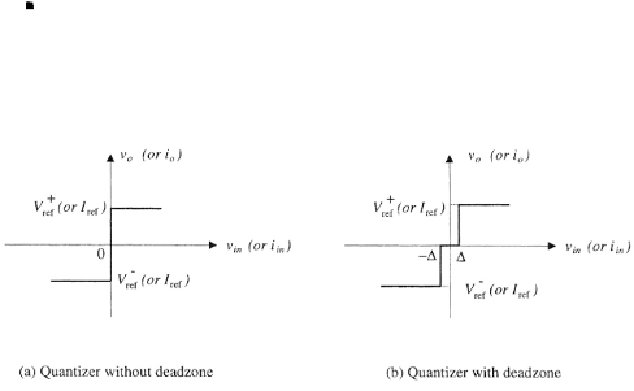Environmental Engineering Reference
In-Depth Information
Due to the over-sampling nature of over-sampled sigma-delta modula-
tors, switched capacitor networks or switched current networks with the
clock frequency that is much higher than that of the frequency of input
signals are the circuit techniques for the realization of these modulators.
The over-sampling ratio, defined as the ratio of the clock frequency to the
frequency of the input signals, is usually in the range of 16~64. Although
over-sampled sigma-delta modulators are relatively simple circuits, sim-
ulation of these circuits is rather difficult, mainly due to the following
reasons :
Comparators are harsh nonlinear elements, as shown in Fig.9.2. The
output-input relation of the quantizers can not be characterized us-
ing Taylor series expansion. As a result, methods for linear circuits
and those introduced in Chapter 7 for circuits with mildly nonlinear
elements can not be used to analyze these circuits.
Sigma-delta modulators are dual-time circuits. They contain a high-
frequency clock and a slowly varying input signal. The circuit has to
be simulated over a large number of clock cycles with fine time steps
in order to obtain the performance characteristics, such as signal-to-
noise ratio and dynamic range, of these circuits reliably, resulting in
excessive simulation time.
High simulation accuracy requirement. For example, the resolution of
a 16-bit analog-to-digital data converter with a 1V constant voltage




Search WWH ::

Custom Search